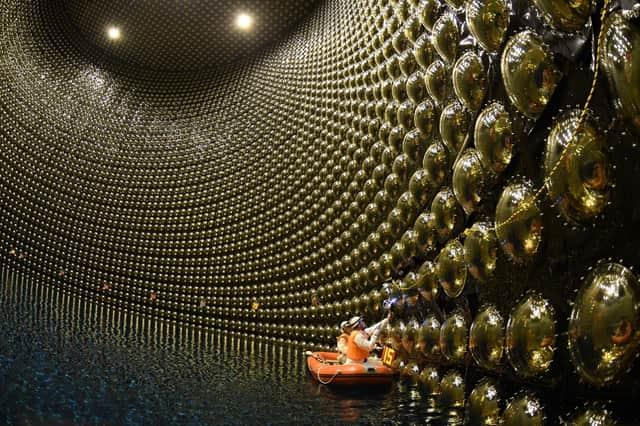Neutrinos: The key to unearthing the origin of the universe? – Dr John Nugent


However, despite their abundance, neutrinos are some of the most elusive particles to detect and, after decades of research, physicists still have many questions about their make-up, properties, and role in the universe’s origin.
At the University of Glasgow, research by members of the particle physics group uses data from the most sensitive neutrino detector on Earth, the T2K (Tokai-to-Kamioka) experiment in Japan. The main goal of the T2K experiment is addressing one of the greatest outstanding problems of modern physics, namely that our current models of the composition of the universe have a fundamental gap.
Advertisement
Hide AdAdvertisement
Hide AdModern physics observes particles (such as electrons) and antiparticles (like positrons) which form a symmetric pair where each has an identical mass but opposite charge. However, we now know that for every antiparticle there are in fact approximately ten billion particles, meaning the universe has a perfect symmetry with each particle balanced by an antiparticle with identical mass but opposite charge, and an almost perfect asymmetry, due to there being many, many more particles than antiparticles in the universe. This naturally leads to the question: where does this asymmetry stem from?
One way to investigate this phenomenon is through studying neutrinos. These fundamental neutral particles can be created in a state of quantum superposition – for example, the ability to be in multiple states at the same time – wherein they change their state in what is known as ‘neutrino oscillation’. By counting how often this change occurs, it may illuminate the underlying mechanism giving rise to the observed particle/antiparticle asymmetry.
Using advanced data analysis techniques, we can interrogate the measurements from the T2K experiment to investigate neutrinos’ properties. By simulating the high-intensity proton beam which produces the neutrinos, the group from Glasgow is able to study the fundamental physics of the resulting interactions. This work provides one of the world’s most precise measurements of neutrino properties, and this research can help us begin to understand their role in the evolution of the cosmos.
Following a pause during which time significant upgrades were made to the particle accelerator, the experiment will be switched back on in early 2023. A new larger data set will be collected throughout next year which, together with our refined data analysis techniques, could mean we are at last on the cusp of understanding fundamental neutrino properties.
The continued partnership between Scottish and Japanese colleagues allows this critical research to take place, and, given that it positions Scotland at the forefront of major developments in fundamental physics, underlines the importance of this research.
Dr John Nugent is a member of the Japan Society for the Promotion of Science and Royal Society fellow at Tohoku University, Japan, and an honorary research fellow in the School of Physics and Astronomy at the University of Glasgow. This article expresses his own views. The RSE is Scotland's national academy, bringing great minds together to contribute to the social, cultural and economic well-being of Scotland. Find out more at rse.org.uk and @RoyalSocEd.
Comments
Want to join the conversation? Please or to comment on this article.